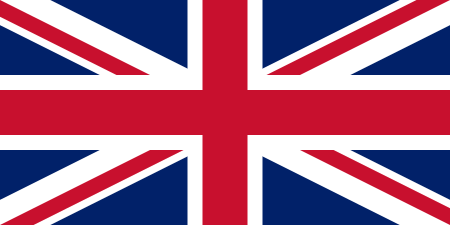British Bechuanaland
British Bechuanaland was a short-lived Crown colony of the United Kingdom that existed in southern Africa from its formation on 1 Sep 1885 until its annexation to the neighbouring Cape Colony on 16 Nov 1895.[1] British Bechuanaland had an area of 51,424 square miles (133,190 km2) and a population of 84,210.[2] Today the region forms part of South Africa.
British Bechuanaland | |||||||||
|---|---|---|---|---|---|---|---|---|---|
| 1885–1895 | |||||||||
 Flag
.svg.png) Coat of arms
| |||||||||
 | |||||||||
| Status | Crown Colony | ||||||||
| Capital | Vryburg | ||||||||
| Common languages | English | ||||||||
| Government | Constitutional monarchy | ||||||||
| Queen | |||||||||
• 1885–95 | Queen Victoria | ||||||||
| Historical era | New Imperialism | ||||||||
| 1 March 1885 | |||||||||
• Annexation to Cape Colony | 16 November 1895 | ||||||||
| |||||||||

History
Bechuanaland meant "the country of the Tswana", and for administrative purposes was divided into two political entities. The northern part was administered as the Bechuanaland Protectorate and southern part, south of the Molopo River, was administered as the Crown colony of British Bechuanaland.[2]
In 1882 the Tswana country suffered two secessions by the Boer states of Stellaland and Goshen. For many months, starting in 1883, pressure was placed on the British Government to take action in Bechuanaland because of unrest in the area. On 29 October 1884, the British Government appointed Sir Charles Warren as Special Commissioner of Bechuanaland. On 13 November 1884 Parliament voted a sum of £675,000[3] (this is equivalent to over £32 million today) for military operations in Bechuanaland. Sir Charles Warren was authorised to recruit an irregular force of 1,500 in South Africa[3] in addition to the regular troops that would be provided.
A force of 4,000 troops, under Sir Charles Warren, set off to recapture Stellaland and Goshen. On 7 February 1885 the force reached Vryburg, the principal town in Stellaland, then continued to the hamlet of Rooigrond, the administrative centre of Goshen. Just north of Rooigrond the town of Mafeking was laid out as an administrative centre. By 8 April 1885, Sir Charles Warren sent a dispatch to notify the British Government that he had occupied Bechuanaland and had entirely restored order. The two Boer republics had collapsed without any bloodshed.
On 30 September 1885 Stellaland, Goshen and other territories to the south of the Molopo and Nossob rivers (excluding Griqualand West) were constituted as the Crown Colony of British Bechuanaland. In 1891 the South African Customs Union was extended to British Bechuanaland, and in 1895 the colony was annexed to the Cape Colony[2] and now forms part of South Africa, the area around Mafikeng.
The map at right is inaccurate in that the pink-shaded area shown as being British Bechuanaland is too small: it also extended westward to the German border and north to a tributary of the Molopo. In his initial proclamation Warren mentioned the Auob River, but in his revised proclamation the Nossob became the boundary.
See also
- History of South Africa
- Bechuanaland Protectorate, the northern part of Bechuanaland that now forms the Republic of Botswana.
- Postage stamps and postal history of British Bechuanaland
References
- Ben Cahoon. "South Africa". Worldstatesmen.org. Retrieved 2015-07-02.
- Cana, Frank Richardson; Hillier, Alfred Peter (1911). . In Chisholm, Hugh (ed.). Encyclopædia Britannica. 3 (11th ed.). Cambridge University Press. pp. 604–605.
- "ARMY SUPPLEMENTARY ESTIMATES' 1884–5—MILITARY OPERATION'S IN EGYPT AND BECHUANALAND. (Hansard, 13 November 1884)". Hansard.millbanksystems.com. Retrieved 2015-07-02.